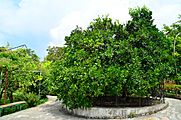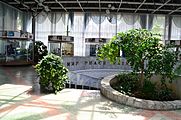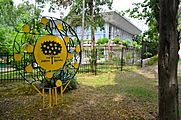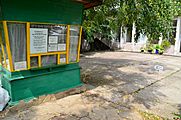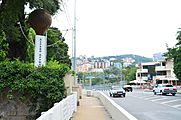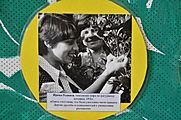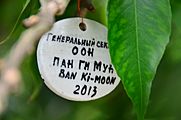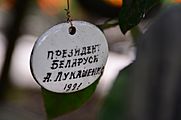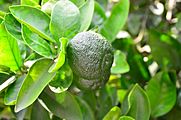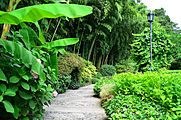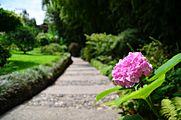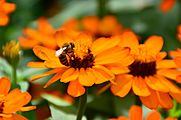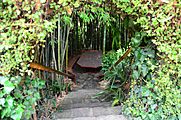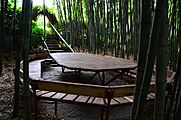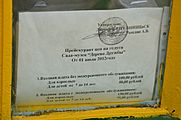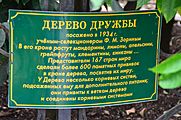Friendship Tree facts for kids
Quick facts for kids Friendship TreeFriendship Tree Garden Museum |
|
|---|---|
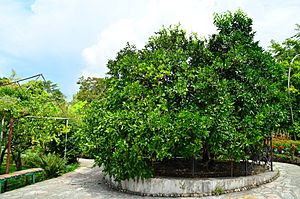
The Friendship Tree,
in the Subtropical Botanical Garden. |
|
| Type | Botanical |
| Location | 2/28 Fabritsiusa Street, Tsentralny city district, Sochi, Russia, 354002 |
| Owned by | Institute of Floriculture and Subtropical Crops |
| Operated by | Russian Scientific Botanical Institute. |
| Species | > 200, in eighty Families. |
| Collections | subtropical fruits, subtropical ornamental plants. |
The Friendship Tree is a very special citrus tree located in the Friendship Tree Garden Museum and Subtropical Botanical Garden. You can find it in the Tsentralny city district of Sochi, a city on the east coast of the Black Sea in southern Russia. This tree is famous because people from 167 different countries have added citrus branches to it. These branches are grafted onto the tree as symbols of friendship between nations and living in peace with nature.
Contents
The Friendship Tree's Story
The Friendship Tree began as a science project. A scientist named FM Zorin planted it in Sochi to create a new type of mandarin orange. He experimented by grafting 45 different kinds of citrus fruits onto this one tree. More trees were planted in the botanical gardens later.
In 1940, a famous arctic explorer and Soviet scientist, Otto Yulyevich Schmidt, visited the tree. To show his love for nature, he grafted a new citrus bud onto the tree. This started a wonderful tradition!
People from all over the world, with different jobs and beliefs, continued this example. In 1957, doctors from Vietnam suggested calling the experimental citrus tree the "Friendship Tree." The name stuck!
Many important people have added grafts to the tree. These include leaders of countries, famous public figures, scientists, artists, and even astronauts and athletes. For example, the Soviet Olympic Gold Medalist in figure skating, Irina Rodnina, added a graft in 1976. The Secretary-General of the United Nations, Ban Ki-moon, also added one in 2013. Each graft has a small metal tag. This tag shows the name of the person who added the graft and the date it happened.
Exploring the Botanical Garden
The Subtropical Botanical Garden is a unique place. It's like a living museum of nature. It's part of the Russian Institute of Floriculture and Subtropical Crops. The garden is home to the famous Friendship Tree and its museum. It also has many living collections of subtropical fruit trees. You can also see beautiful flowering plants and other subtropical climate ornamental plants. The garden grows plants from eighty different botanical families. You can walk along lovely garden paths, see pretty ponds, and relax in special sitting areas.
The Friendship Tree Museum
The Friendship Tree Garden Museum is a great place to learn more. It shows:
- The history of the Friendship Tree with pictures and stories.
- Many guest books filled with messages from visitors. These messages are about peace, friendship, and harmony. People from Russia and other countries have written in them.
- Lots of gifts that celebrate the Friendship Tree. These gifts show different cultures and traditions from around the world.
See also
Gallery
-
Irina Rodnina placing graft on Friendship Tree (1976)
-
Ban Ki-moon graft label (2013)
-
Belarus president Alexander Lukashenko graft label (1991).


